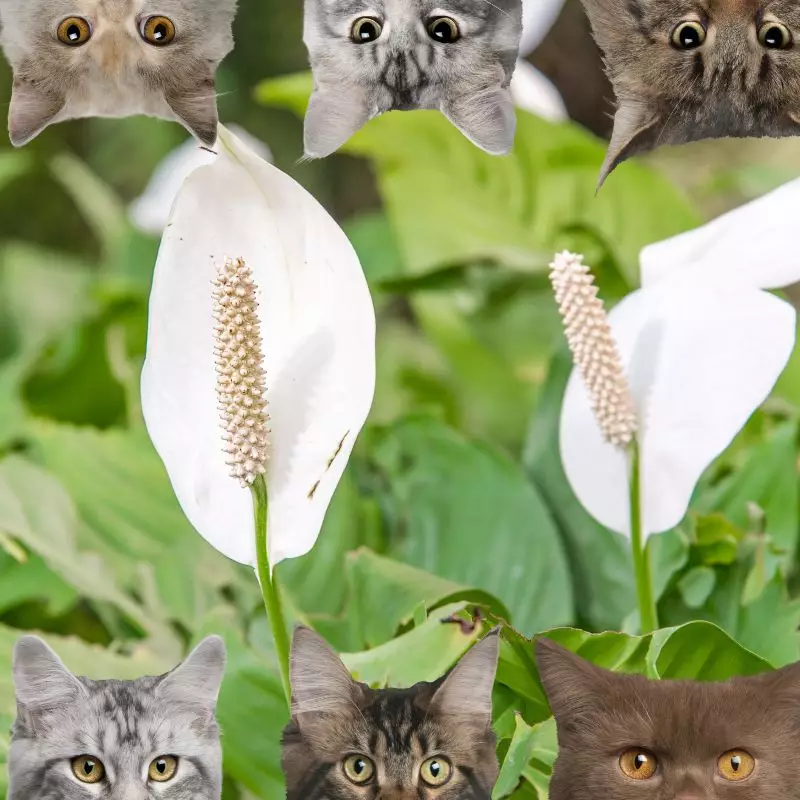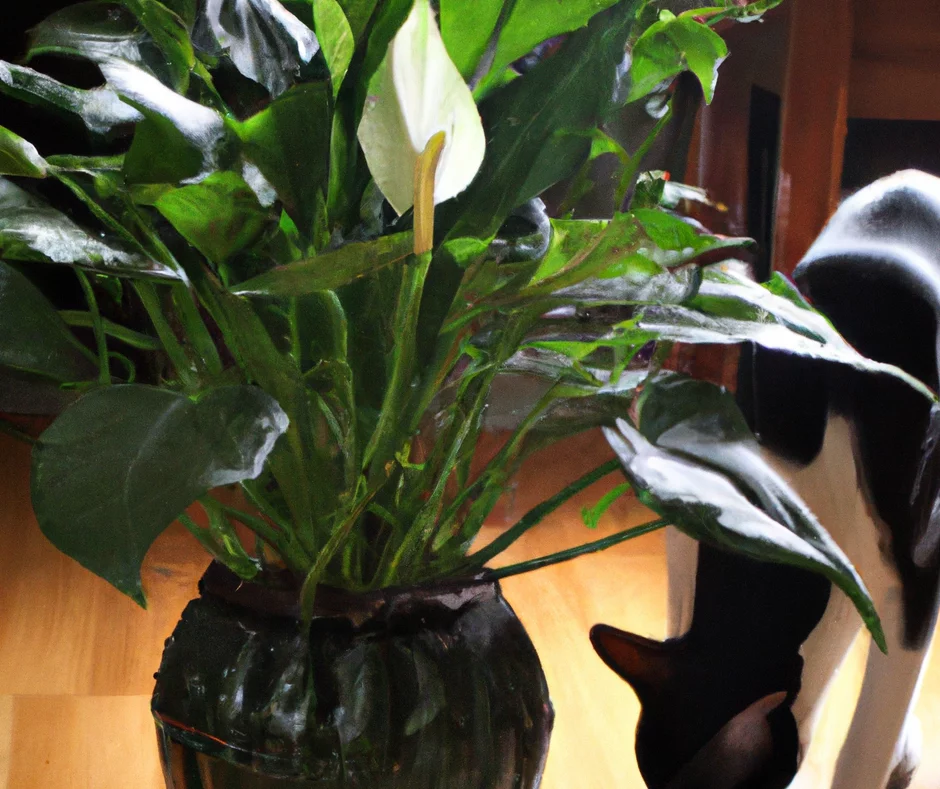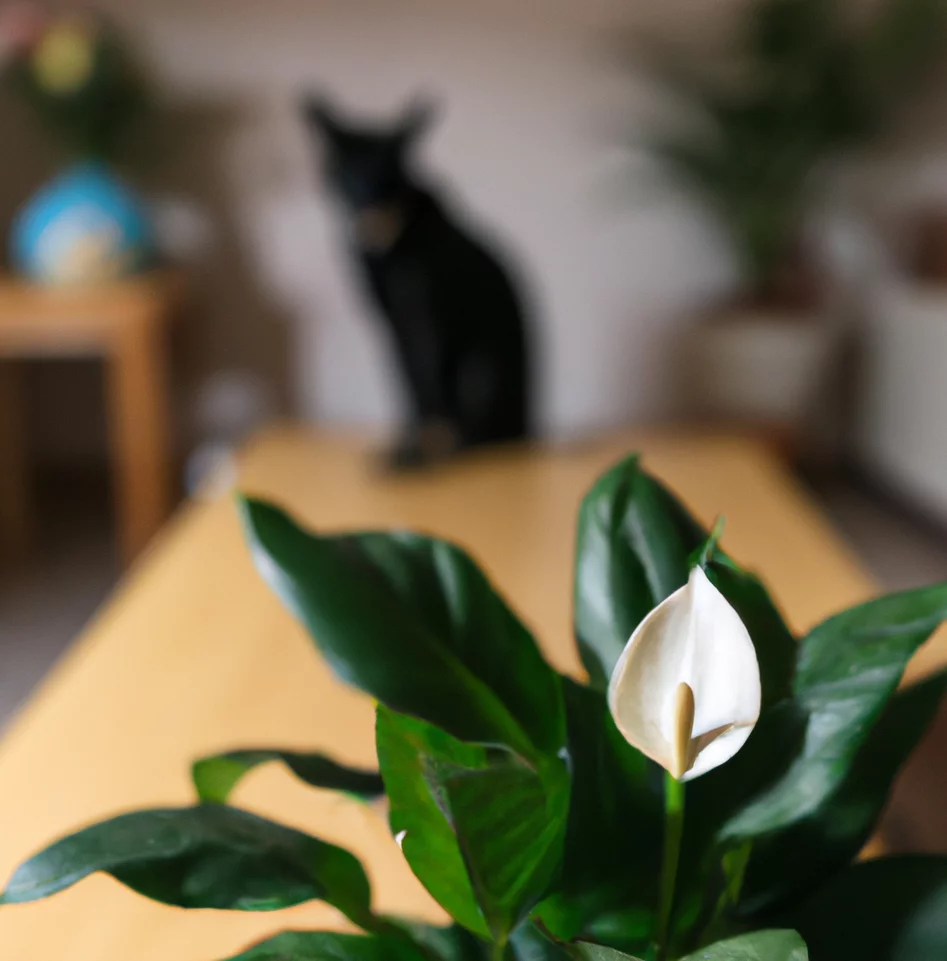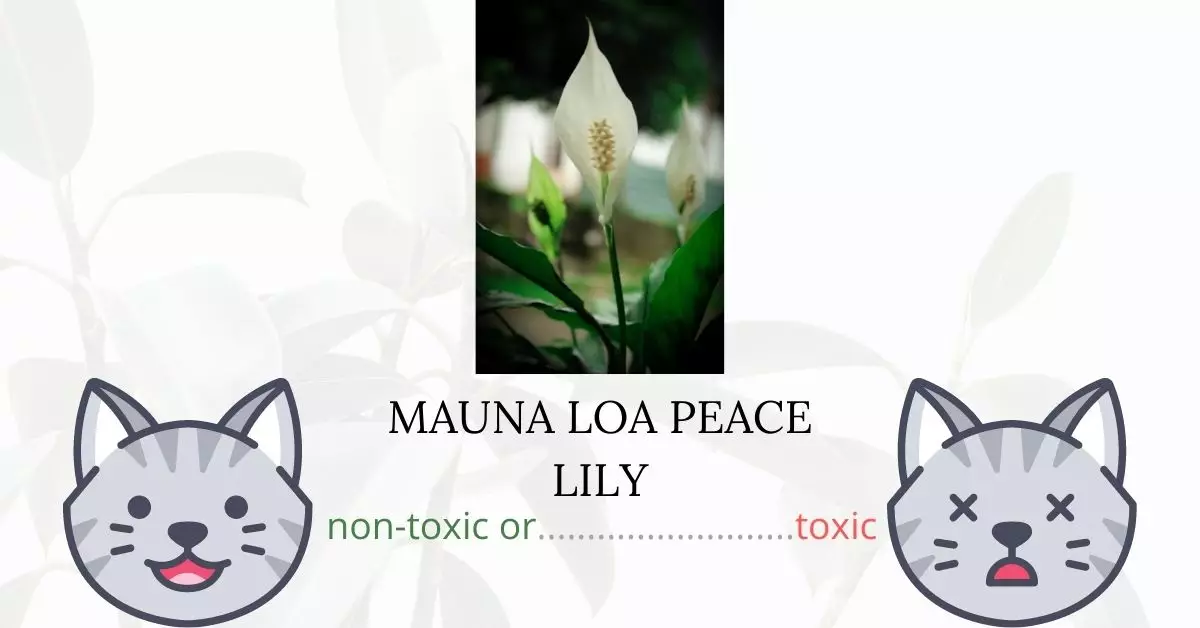Yes, the Mauna Loa Peace Lily is toxic to cats.
This article has been meticulously crafted in collaboration with a team of experienced DVMs (doctors of veterinary medicine). Through their valuable insights and expertise, we aim to offer accurate and up-to-date information regarding the potential risks associated with plants, specifically focusing on the Mauna Loa Peace Lily and its impact on cats. Our comprehensive research extends to high-authority websites such as ASPCA and PetMD, ensuring we provide trustworthy and informed content.
Mauna Loa peace lilies are sought-after indoor plants owing to their ease of care and unique aesthetics. While they may enhance the ambiance of both indoor settings and patios during the summer, they pose risks to our feline friends. These plants, while not true lilies of the Liliaceae family, contain insoluble calcium oxalates in their foliage, stems, and blossoms. These compounds attach to the oral and esophageal tissue of cats when ingested. The resultant effect is the formation of sharp crystals that pierce the mouth cavity, causing pain and inflammation—a natural defense mechanism for the plant. While most toxic reactions in cats are typically mild due to the painful mouth irritation dissuading further consumption, severe complications can arise if throat swelling occurs, potentially obstructing the airway.
Clinical Signs of Mauna Loa Peace Lily Poisoning in Cats

When a cat comes into contact with, inhales, or ingests parts of the Mauna Loa peace lily plant, it may exhibit various clinical signs. These reactions are primarily a consequence of the insoluble calcium oxalates present in the plant, which have a direct effect on the feline’s oral and esophageal tissues. Here’s a breakdown of the potential symptoms and their underlying causes:
- Drooling: This is a direct response to the irritation caused by the calcium oxalate crystals. The excessive saliva helps to flush out the irritants from the mouth.
- Pawing at the mouth: The sharp crystals can cause immediate discomfort, leading the cat to try to remove or soothe the irritation using its paws.
- Vomiting: Ingesting the plant can upset the stomach due to the irritating nature of the compounds, leading to vomiting as the body tries to expel the toxic elements.
- Loss of appetite: The oral discomfort can deter the cat from eating, resulting in a decreased appetite.
- Oral irritation: The calcium oxalate crystals can cause redness, swelling, and pain in the mouth and throat.
- Diarrhea: The irritants, when passed down to the digestive system, can lead to an upset stomach and result in diarrhea.
- Dysphagia (difficulty swallowing): Swelling and irritation in the throat caused by the crystals can make swallowing difficult and painful.
- Dyspnea (difficulty breathing): Severe inflammation or swelling in the throat can obstruct the airway, causing breathing difficulties.
- Dilated pupils: This can be a sign of distress or pain in the cat.
- Cardiac abnormalities: Some cats may experience irregular heart rhythms or other cardiac issues due to the stress and toxicity of the plant ingestion.
- Seizures: In extreme cases, the neurotoxic effects of the plant or extreme distress can lead to seizures.
- Coma: This is a rare but severe reaction and can be the result of multiple system failures due to the plant’s toxicity.
It’s imperative to consult a veterinarian if your cat exhibits any of these symptoms after coming into contact with the Mauna Loa peace lily.
First Aid and Treatment of Mauna Loa Peace Lily Poisoning in Cats

There is no antidote to cure a Mauna Loa peace lily poisoning. As symptoms occur, they will be managed and treated. The vital functions of the cat should be stabilized as quickly as possible.
The usual treatment routine of the veterinarian will possibly include washing the cat’s oral cavity, intravenous fluid therapy, and prescription of medicines such as antihistamines and stomach protectants.
Recovery from Mauna Loa Peace Lily Poisoning in Cats

The majority of cats heal completely and have no long-term consequences mostly because cats do not consume substantial amounts of the Mauna Loa plant. The intensity of the poisoning will be directly proportional to the quantity of the plant consumed. Symptoms of Mauna Loa peace lily poisoning usually go away after 12 to 24 hours of treatment.
Prevention of Mauna Loa Peace Lily Poisoning in Cats
Familiarize yourself with the toxic plants that can affect your feline friends. Know the names and appearances of these plants and gather information on how they can affect a cat. Staying indoors is the safest method to keep your cat safe from exposure to Mauna Loa peace lilies and other toxic plants.
If you love plants but have cats at home, check out these lists:





